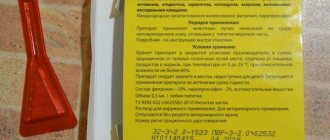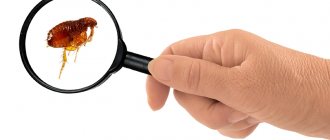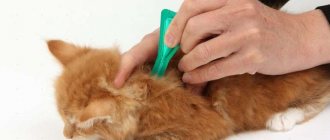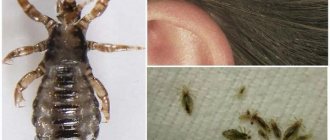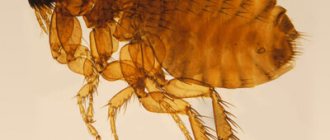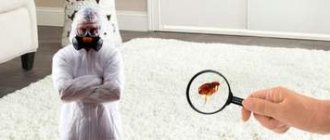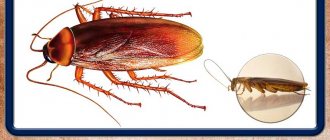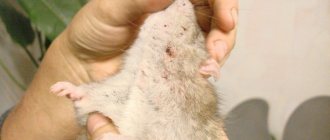Fleas are parasitic insects that every pet owner has to fight. Moreover, some people think that blood-sucking insects are the prerogative of only animal owners. However, this opinion is erroneous: recently, bloodsuckers have begun to appear in multi-storey buildings, causing great discomfort to their inhabitants with their bites. The importance of the problem can be assessed if you know how long fleas live without an animal in the apartment.
How long do fleas live?
In favorable conditions for life, fleas live up to three months, during which the female lays approximately 500 eggs.
The most comfortable conditions for parasites are a temperature of 21-26 degrees above zero, and a humidity of about 80%. When the temperature increases by 10 degrees, the development of fleas almost doubles. A decrease in temperature, on the contrary, leads to a slowdown in the growth of insects and an increase in life expectancy up to 2 years. The reproduction cycle of insects also depends on the temperature regime. At optimal temperatures, the development period of the larvae is one month, at elevated temperatures - up to 10 days, at very low temperatures - up to 7 months. Then the eggs develop within 14 days; the insect remains at the pupal stage for about 20 days. In general, the full development cycle lasts from 10 days to one year, and life expectancy - from 1.5 months to several years.
Climatic conditions
All insects are afraid of low temperatures, including fleas. If the thermometer drops below 0⁰C, then the young animals will die in 3-5 days . The pest will survive up to +5⁰C for at most 10 days. The minimum temperature level when a flea can more or less exist is +10⁰C. The chance of survival in this case is 50/50.
Young animals are more vulnerable to low temperatures than adults. Larvae with laid eggs stop developing already at +13⁰С. At +10⁰С all offspring die.
Like other insects, a flea can hibernate, but provided that the temperature does not drop below +8⁰C. Heat also negatively affects the life of parasites. If the thermometer rises above +35 degrees, the pest will die in a matter of days. Dryness can also be considered a critical factor. Low air humidity has an extremely negative effect on both the offspring of the insect and the adults. The larvae begin to die inside the cocoons. In the summer months, when the heat stays at 30⁰C, the flea population decreases.
Read more ► Linen fleas, what do they look like, why are they dangerous and how to get rid of them?
How long do fleas live without food?
Fleas can go without food for about 2-3 months; their bodies are adapted to living in unfavorable conditions and the absence of a food source. But fleas cannot go on without food indefinitely, because they need fresh blood to reproduce and lay eggs.
When leaving the apartment with your pet for a long time, you should not expect that the fleas will die without the animal; they will definitely wait for the cat or dog to arrive and bite them. A peculiarity of country fleas and other types of fleas is their ability to sometimes feed on the blood of rats and mice, so they can wait for a long time for the owner with their pet.
How quickly do fleas die during treatment?
If you treat an apartment with all your belongings and animals with chemicals at the same time, then all the fleas will die in two days. However, flea eggs and cocoons will remain, which are hidden in hard-to-reach places: between the fibers of carpets, in the crevices of parquet and baseboards. Therefore, it is better to dry-clean carpets and re-treat all cracks with insecticides.
Since it will not be possible to cope with all the clutches of eggs in one treatment, the apartment can be treated again after 2 weeks - by then young fleas will hatch from the cocoons.
How long do flea larvae live?
The larva, depending on conditions, lives 5-45 days. Humidity and ambient temperature indicators are very important for it. It is very important that she has access to food - the excrement of adults, imagoes.
If you have a flea infestation, there will be a lot of eggs and droppings on the carpets, pet bedding, upholstered furniture, and other areas.
In apartment conditions, the larva develops into a pupa in 7-12 days. If the room is cool, dry, and there is little nutrition, the development process is slowed down for up to a month and a half.
Then the pupal stage begins. It develops in a cocoon for 7-19 days. Females develop 20% faster. If the temperature drops, the development of the pupa slows down.
The development process is affected by humidity, temperature, and nutrition. The better the larva ate, the longer the pupa develops. In order for her to leave the cocoon, the level of nutrients and fluid in her body must become critical. In some cases, being in a cocoon can take up to 5 months.
The flea leaves the cocoon when it senses the presence of its owner. She learns about it by temperature and pressure. These signals become a call to exit.
Types and size
There are about 2,500 species of fleas in the world that live on animals and birds.
which are more common:
- feline;
- canine;
- human;
- bird;
- rat.
The most common cat flea in the city can also bite people and dogs. is less common, which is associated with an improvement in people’s quality of life.
The size of the parasite depends on the species. The length of the largest flea reaches 13 mm. This species can be found in North America and only in the habitats of the mountain beaver.
https://youtube.com/watch?v=74KwmGIZ7Oo
Flea lifestyle
The flea belongs to the order of blood-sucking arthropods. The insect moves by jumping, which can reach 30 cm in height and 50 cm in length. The body of the parasite is flattened laterally and covered with bristles; this structure allows it to move quickly in the animal’s fur. There is a sensory organ on the abdomen that signals the approach of a potential food source and a change in temperature.
Where live
Most often, fleas can be found on dogs and cats, so it may seem that the animals harbor parasites. In reality, warm-blooded animals and humans serve only as a source of food for fleas.
After feeding on blood, the insect jumps off the cat or dog to find a place to breed. In the apartment, parasites live in animal bedding, long-pile carpeting, and the floor. In nature, fleas choose places close to animal habitats. These could be holes, bird nests, garbage dumps, basements.
Flea life cycle, reproduction and development
Stages of flea development.
The life cycle of an insect consists of the following stages:
- Egg.
- Larva.
- Doll.
- An adult, or imago.
The female, after being saturated with blood, which is necessary to reproduce, mates with the male. After fertilization, she lays 4-10 eggs. The eggs are fired over a long distance - this method of laying allows future larvae not to compete for food sources and increases the likelihood of survival.
2 weeks after laying, larvae emerge from the eggs and eat the feces of adult insects, blood residues, and organic matter. At favorable temperature and humidity, the larva can emerge from the egg in 2 days. Before the formation of the pupa, the larva goes through 3 stages of molting. The time it takes for an adult to emerge from a pupa depends on environmental conditions and ranges from 1-2 weeks to 1 year.
Reproduction rate
With good nutrition, fleas multiply quickly: a female can make 2-3 clutches per day, that is, lay up to 30 eggs per day. But more often she has enough strength to make one clutch of eggs. During her life, the female lays up to 500 eggs, after which she dies.
What determines the lifespan of fleas?
The duration of a flea's existence is influenced by a number of factors:
- Ambient temperature and humidity. At low humidity and temperature, bloodsuckers will live longer than at high temperature.
- Constancy of the state of the environment. If the temperature fluctuates frequently, the parasites fall into a state of torpor. Thanks to him, bloodsuckers live longer.
- Food. If a flea goes hungry, it will live even longer.
A flea is primarily a parasite. Nature provides that their reproduction depends not so much on timing and speed, but on the number of offspring each female produces. You should not hope that in your home such an important process of reproduction will somehow stop on its own.
It is important to poison these parasites completely. It is necessary to destroy both adults and larvae and egg laying. Only after this can we hope that the parasites will disappear completely.
Flea lifespan
How long does the most common human flea, Pulex irritans, live? In a favorable environment, this insect lives for about 3 months.
During this period, 1 female of this bloodsucker lays 400–600 small eggs, and each such small pest makes about 100 bites. Only after this minimal “plan” is completed does this parasite die naturally.
An important condition for comfortable living of fleas is compliance with specific air humidity and temperature. Thus, rat-like insects Xenopsylla cheopis live quietly inside any room at 14 degrees Celsius and 55% humidity or more.
Bloodsuckers that live in a private household or apartment (Pulex irritans, Ctenocephalides felis or Ctenocephalides canis) also feel good there. However, they die quickly without immediate access to blood.
If these insects live in places with elevated temperatures, then all their phases of reproduction and development pass much faster. Thus, adults become very large.
Typically, flea larvae of pulex irritans degenerate into an adult in 30 days, while at elevated temperatures the fleas multiply and then grow much faster - in 7 days. The development of flea eggs ends after 14 days, and then for another 14 days this small pest is in the pupal phase.
These bloodsuckers, who live not in a warm home, but in nature, die quickly. After all, they are destroyed by the carriers themselves (dogs, cats, etc.). Then the animals bite the bloodsuckers out of their fur.
Also, many such bloodsuckers die from various infections. There are fleas that change several hosts during their life when the animal dies.
Fleas Ctenocephalides felis, Ctenocephalides canis immediately leave a dead dog or cat because they cannot feed on the blood of a dead animal.
How long do these insects live?
How long do various species of bloodsuckers live (for example, Pulex irritans, Ctenocephalides felis, Ctenocephalides canis, Xenopsylla cheopis, etc.)?
The lifespan of all types of fleas is directly related to these 3 factors:
- specific temperature regime;
- living conditions - apartment or street;
- air humidity.
On average, these small pests live 18–90 days. Throughout its life, 1 bloodsucker makes about 10 bites and, thus, it injures its owner.
Over the course of her entire life, a female flea lays about 500 eggs.
However, these bloodsuckers often die from various infections that they themselves spread, as well as from the teeth of a domestic cat or dog, from human hands or any disinfectant.
Can parasites live without food?
How long do fleas live without food? Approximately 2–3 months. the parasites Pulex irritans, Ctenocephalides felis, Ctenocephalides canis or Xenopsylla cheopis can live without consuming blood.
Especially those individuals that often bite humans. At the same time, they remain mobile.
However, if these insects do not feed for a long time, they do not reproduce in any way. After all, only after a hearty lunch do they mate with each other, and then the female flea lays many small eggs.
Do these bloodsuckers live in a private household or apartment if there are no animals or people there? Yes, but not indefinitely. Sooner or later they still die.
What determines the lifespan of a flea?
At the moment, it is the sharp change in air temperature that greatly affects the lifespan of fleas.
In addition to it, the lifespan of such bloodsuckers Pulex irritans, Ctenocephalides felis, Ctenocephalides canis or Xenopsylla cheopis is directly related to the following factors:
- air humidity. Low (but not too low) humidity is comfortable for bloodsuckers;
- source of food. Small pests that do not receive fresh animal or human blood for a long time live longer;
- the invariability of specific temperature and humidity conditions.
Bloodsuckers that live in areas with constant sharp changes in humidity and fluctuations in street temperature often quickly become numb. This significantly increases the life span of a flea.
An important factor for fleas is the number of offspring produced from 1 female, and not the rate of formation of flea larvae. As a rule, such a process is continuous.
Thus, while fighting various bloodsuckers, the lodger not only removes these parasites from the pet’s fur, but also destroys flea larvae hidden in secluded places.
How long do fleas live in extreme conditions?
The life cycle of a flea is maximally tuned to survival. Some individuals can even survive the animals on which they settled. They are able to withstand environmental challenges, both heat and cold.
If the host animal dies, the fleas immediately leave it. The blood of a dead animal does not suit them.
It is curious that the flea pupa is most adapted to extreme conditions. It can withstand icing, frost, severe drought and even the destructive effects of insecticides. The viability of the pupa, even in unfavorable conditions, can persist for several years.
How fleas are fertilized and reproduce
How are fleas fertilized and reproduce? They have a specific reproductive system.
Mating of similar insects Pulex irritans, Ctenocephalides felis, Ctenocephalides canis or Xenopsylla cheopis lasts a maximum of 10 hours. They almost always copulate with each other after they have drunk a large amount of blood from a particular host.
What is the reproduction rate of various flea species (Pulex irritans, Ctenocephalides canis, Xenopsylla cheopis, etc.)? After mating with the male, the female flea begins to lay eggs. Then she puts away up to 10 pieces at a time.
The total number of flea eggs from 1 female is more than 500 pieces per 1 life cycle. Such small pests copulate with each other in comfortable conditions.
Females breed in dust, on various rags, certain woolen products, genital crevices, dog kennels, clothes or other places hidden from prying eyes.
Flea eggs are covered with a white shell and also have an oval shape. They are similar to grains of rice, but are significantly smaller in size.
Can they live in an apartment without animals?
To fully answer the question of whether fleas can live in an apartment without animals, it is necessary to consider the features of the insects’ life cycle. The optimal conditions for their full development are the following: constant temperature maintenance within 21 - 23 degrees, humidity - about 80%.
If the above conditions are maintained, the life expectancy of fleas is from two to three months.
A particularly important factor for adult parasites and their larvae is the presence of a constant source of food. The absence leads to a slowdown in the development of the nymph and the absence of the ability to reproduce in the adult. In the absence of food, the life expectancy of the parasite increases.
A similar thing happens when the ambient temperature drops. At higher values, the development of the nymph occurs faster, and the life expectancy of an adult insect is reduced, often by more than half. During this time, one female manages to lay from 400 to 600 eggs.
Fleas can live without animals in an apartment for two to three months. Mostly they do not live on the pet’s fur, but, for example, on its bedding. When the need arises, the blood-sucking flea attacks the animal; immediately after saturation, the flea jumps off.
Popular questions
Where do fleas live in an apartment without animals? The favorite habitats of parasites are animal bedding, bedding, accessories, and areas located in close proximity to food sources. In the absence of pets, bloodsuckers live in capes, blankets, carpets, and soft toys.
Can fleas live in an apartment where there are no animals? This is possible. In the absence of other food sources, bloodsuckers are considered as a source of human nutrition.
Is it possible to get rid of fleas by leaving the apartment for a while? If favorable living conditions are met, the parasites remain viable for several months.
However, if you create negative conditions, for example, lower the temperature to minus ten degrees or more, the fleas will die very quickly; for this, you can use such a common method of eliminating insects as freezing.
Can fleas live in clothes and in the sofa?
At first glance, it may seem that the “flea army” lives on animal hosts, but this is not so. Parasites need a quieter place to live and reproduce. That's why they live on a pet's bedding, under linoleum, behind baseboards, in carpets, upholstered furniture, plush toys, and in bed. People often ask the question: “Can fleas live in a sofa?” - and receive an affirmative answer: “Yes!” They may also get into clothing or clutter.
Where do they live without animals?
Where exactly fleas live in an apartment depends on the location of food sources, which may include various animals and people. They especially often settle on the animal’s bedding, which provides them with constant access to food and helps maintain conditions suitable for reproduction and development.
If the animal is absent, insects settle mainly directly close to heat sources, for example, at the joints of walls, floors near heating radiators, bedding, furniture upholstery, carpets, soft toys.
Types of fleas
The main types of fleas living in the middle zone:
- Feline.
- Sandy.
- Earthy.
- Homemade.
- Rat.
- Chicken.
- Human.
sand flea
This type of flea lives in sand. They are distinguished from other varieties by their light color. Sand fleas feed on the blood of humans, cats, dogs and other mammals. The main feature of these individuals is the type of feeding of the female: they bite into the surface of the skin, quickly get to the vessel and drink blood.
After a certain time, the eggs ripen in the female, and she significantly increases in size (about the size of a pea). When it is necessary to lay eggs, the female shoots them out of the oviduct, while she remains in the thickness of the skin.
Earth flea
Externally, this type of flea is practically no different from other species. Individuals feed on the blood of mammals. Most often, residents of the first floors, as well as those who have high levels of humidity in the room, suffer from them.
Habitats: basements, baseboards, furniture, soil.
House flea
This flea can be of several species that can live in a warm room. They can be found in animal bedding, on animals, under baseboards, in furniture, carpets, and bedding. As a rule, they feed on the blood of cats and dogs, and in rare cases, human blood.
Human flea
These individuals are dark brown in color and their size does not exceed 4 mm. The length of the jump is up to one and a half meters, the height is up to 30 cm. They prefer to feed on the blood of cats, dogs, pigs and people.
This is due to the lack of hair, which makes it much easier for them to move. This type of flea does not have thoracic teeth, which help them move through the fur.
Dog flea
This species is close to the cat flea. The size of insects does not exceed 5 mm. Dog fleas are carriers of various parasites and infections.
They can parasitize dogs, cats and other mammals. Eggs are laid according to the same principle as cat fleas (on animals), but since they are not fixed, they very quickly end up in the environment.
Rat flea
Fleas of this species range in color from light brown to dark brown. They reach 2 mm in length. Most often they live in basements, so their main diet is the blood of rats and mice.
cat flea
The head of these fleas is flatter than that of other species. The length of the individual is up to 0.5 mm. Cats can become infected with them on the street or from their fellow cats.
It is not always possible to find this parasite on cats. This is due to their active care of their fur.
Chicken flea
Affects domestic and wild birds. Their distinctive feature is the presence of horny forceps in males. Bite areas are areas of the beak and eyes where there are practically no feathers. They can feed on the blood of other animals, as well as humans, but not for long. Chicken fleas do not live in a house where there are no wild or domestic birds, and if they do live, they do not live for long.
Man and fleas
Unlike head or pubic lice, fleas avoid human contact. The parasite can linger on clothing for a couple of days and periodically attack its owner, but the insect’s natural habitat is animals with widespread hair.
Under artificially created conditions, fleas have demonstrated the ability to live on human blood. But in the natural habitat this is rare. The parasite is too large to reproduce safely on human skin. And it is much more convenient for him to move on fur than on a bare or bristly surface.
It is extremely unlikely that fleas will reach a person's head. The most they can do is jump to ankle level. And as soon as the pest begins to move higher, the person will immediately feel it. Once on the skin, a flea simply bites, drinks blood and tries to leave the uncomfortable place as quickly as possible. The bite can be compared to a mosquito.
Methods for eliminating fleas in animals
Pets must be treated first. There are many means for these purposes.
Special shampoos . The product is applied to the pet’s fur while bathing, after 3-5 minutes it is washed off with clean water, then the animal must be thoroughly combed.
Sprays and drops are very effective in controlling fleas. The drops should be applied to the animal's skin along the ridge to prevent the drug from being licked off. The spray is applied to the entire coat by spraying.
Anti-flea collars are used not only to get rid of parasites, but also as a preventive measure. Biological or chemical flea collars for dogs and cats can be purchased at veterinary clinics or pharmacies.
Symptoms indicating a dog infection
In addition to a visual examination of the pet, the presence of “bloodsuckers” is indicated by the following symptoms:
- The dog itches and does it continuously.
- The animal suddenly jumps up and tries to bite itself.
- Red spots of unknown etiology appear on the dog's skin.
- Bald patches, sores and scratches form on the dog's body.
- The animal whines pitifully for some unknown reason.
- The dog begins to shed prematurely.
- The pet becomes restless and irritable, loses appetite, and suffers from insomnia.
- A sharp decrease in the animal’s weight with proper feeding.
As soon as the animal shows the above signs, it must be immediately shown to a veterinarian
to make an accurate diagnosis and prescribe treatment. Delay in this matter is unacceptable.
Folk remedies against fleas in animals
- Treat your pet's fur with a solution containing essential oils of lavender and cedar (2 drops of oil per 500 ml of water). Spraying should be done daily for two weeks.
- Make a compress from a mixture of camphor alcohol, 3% acetic acid and regular cologne. Hold a plastic bag in the area of the cat's neck moistened with this solution. Then comb the coat well over a bowl of water.
- Dissolve regular table salt in warm water and keep the cat in it for about 10-15 minutes.
- Chop a couple of cloves of garlic and add half a glass of water, let it sit overnight, and rub the resulting solution into your pet’s skin.
- Combing the fur using baking soda; after the procedure, the animal must be washed.
- Treating the animal with lemon spray. Cut the lemon into several parts and boil in a liter of water. Leave the resulting liquid for 6-8 hours, strain and pour into a spray bottle.
After removing fleas from pets, it is necessary to carry out a general cleaning of all areas where parasites may live.
Types of fleas, photos and names.
Currently, there are from 15 to 22 families of fleas, including many species:
Human flea (female on the left, male on the right)
(lat. Ctenocephalides felis) is found on all continents and is a carrier of plague, brucellosis and other infections. It feeds on the blood of cats, dogs, rodents, many other animals, as well as humans. Larval development occurs in animal fur and litter. The average size of a flea is 0.75-5 mm, the body length of a female with eggs reaches 1.6 cm. Adults have a short proboscis and a flat forehead. The lifespan of a cat flea ranges from 3 months to 3 years.
The southern rat flea (lat. Xenopsylla cheopis) is a particularly dangerous species of flea, a carrier of plague, mouse and rat tapeworms. It is found throughout the world, but to a greater extent in countries with tropical and subtropical climates. The female flea has a body length of 1.8 to 2.7 mm, males grow from 1.4 to 2 mm in length. The color of the flea can be light or dark brown. Fertilized females lay eggs in the nests of rats and gerbils - animals whose blood they feed on.
Soon after fertilization, the female flea is ready to lay eggs, which occur in small portions. A well-fed female lays 1-2 portions of 4-10 eggs per day, but usually laying occurs once a day or every other day. The process of laying eggs is interesting. The female flea forcefully pushes out the eggs, which are scattered at a considerable distance from each other, which also makes sense: the risk of competition between the hatched larvae is minimized, and most of them will survive, having enough food.
Fleas are insects with complete metamorphosis; their life cycle consists of several stages:
- egg,
- larva,
- doll,
- imago (adult).
Flea eggs are white and very small, looking like grains of rice under a microscope.
The development of flea eggs lasts about 14 days, after which translucent worm-like larvae, devoid of legs, are born, which, writhing, burrow into the litter of the host's nest. The larvae feed on rotting organic matter, desquamated skin epithelium, or the remains of undigested blood in the excrement of the parents.
After 3 molts, the flea larva turns into a pupa, surrounding itself with a strong silk-like cocoon. Depending on weather conditions, the pupal stage lasts from 5 days to several months. In many species of fleas, pupae overwinter, and in some, emergence from the cocoon is timed to coincide with a specific season.
An adult flea emerging from the pupa immediately begins searching for its owner. The active life of an imago lasts on average 1.5-2 months, but at sub-zero temperatures an adult flea can fall into a state of suspended animation for an indefinite period.
- parasitic insects, which every pet owner has to fight. Moreover, some people think that blood-sucking insects are the prerogative of only animal owners. However, this opinion is erroneous: recently, bloodsuckers have begun to appear in multi-storey buildings, causing great discomfort to their inhabitants
The importance of the problem can be assessed if you know how long fleas live without an animal in the apartment
Getting rid of fleas
If you use an integrated approach, you can fix the problem quite quickly. You need to act step by step.
Cleaning and tidying up the living space
It is necessary to pay attention to all surfaces and corners, spaces behind furniture. A mop, rags, and especially a powerful vacuum cleaner will help, since flea eggs can be found in cracks in the floor and other places where they cannot be swept out. In addition, you can use a broom to scatter the eggs around the room, rather than collecting them on a scoop. Retaining eggs after harvesting will provoke re-infestation. It would not be superfluous to add essential oil or flea shampoo to the water during wet treatment.
Washing bed linen
The best option is to wash at temperatures above 60 degrees and dry outdoors in the sun. After drying, the linen should be ironed.
Wardrobe check
The spread of insects in clothing cannot be ruled out. It should be treated with an iron or steam generator, and if possible, dry cleaned. When disinsection, clothes should be hidden in bags.
Pet care
Pet hair must be treated with a special preparation, one of which is BARS® drops for dogs and cats. The product provides maximum results with minimal toxicity. Dishes, tray, toys, bedding, etc. should be washed in very hot water.
How to deal with fleas in the house
If you notice the first signs of an infestation, it is important to take immediate flea control measures. You don't want the female fleas to have time to lay eggs and raise their offspring, which will turn the fight against parasites into an endless cycle. Therefore, before fleas have a chance to lay offspring and hide in different corners of the apartment, immediately implement the following steps
Therefore, before fleas have a chance to lay offspring and hide in different corners of the apartment, immediately implement the following steps.
The first thing you need to do is vacuum everything available. These include carpets, curtains, sofas, wooden floors and kitchen surfaces. The next step will be washing and cleaning mattresses, pillows, carpets, curtains, rugs, beds, etc. Nothing can be missed. You should also clean the walls of your house or apartment. Change dust collection bags immediately after cleaning, repeat full cleaning every week or 10 days. In case all eggs and pupae (cocoon-shaped fleas) are not removed, it is necessary to continue regular cleaning of the house/apartment.
The next step is a flea treatment that includes chemicals to control the growth of the insects. This solution will help you get rid of the next generation of fleas. Make sure to close all windows and doors, close vents, and ask everyone in your household to vacate for 3-4 hours.
If your home has wood or vinyl floors, make a mixture of equal parts vinegar and water. Place the mixture in a spray bottle and apply it to the floor. Use a mop to clean the floors.
Here is another disinfection method for carpets, pillows and curtains that will tell you how to deal with fleas. Make a powder mixture of boric acid and salt and spread this mixture over everything you want to clean. Leave the mixture on the items overnight or one day and then vacuum them to collect the powder. Most eggs will die after applying this mixture and you can vacuum them up. Replace the dust bag.
Another good and effective remedy is a flea trap. You can make your own trap by spreading honey on a plastic plate and placing it in an area that you think is infested with fleas. Place the table fan cover on top and leave the plate overnight. The next morning you will see fleas stuck to the honey. Throw away the plastic trap plate and repeat the process the next night. You will see the effectiveness of the method from your own experience.
The task becomes somewhat easier, since you do not have to regularly bathe your pet, clean its bedding and protect it from new fleas that the animal may bring back into the house. Remember, despite the effectiveness of the above flea treatments, infestations may recur. Schedule cleaning and disinfection procedures to avoid re-infestation.
Room treatment
Today, the choice of products in stores to combat parasites is very large - you can find drugs in the form of aerosols, concentrated solutions, various powders and pencils.
Concentrates have the greatest effect and are low cost. One bottle of this product is enough to treat the entire apartment. However, the drugs are very toxic and have an unpleasant odor; the procedure must be carried out with gloves and glasses, in the absence of children and animals.
The most famous con, “Taran”, “Dobrokhim”, etc.
Aerosols in cylinders can be used to treat office and residential premises. They are not affordable for everyone, but they are very convenient and easy to use, and sometimes have a pleasant aroma.
The treatment should be carried out with the windows and doors closed; it is possible to ventilate the room 2 hours after the procedure.
The following brands are popular: “Raptor”, “Dichlorvos”, “Reid”, etc.
Powders and pencils : mainly used to remove flea larvae in places where they are most concentrated (basements, attics, cellars). They are low cost and have a good effect in getting rid of parasites.
You can purchase the following names: “Phenaxin”, “Tornado”, “Baygon”, etc.
If you are unable to cope with harmful insects on your own, you can use the services of a special service that will professionally help solve the problem quickly and reliably.
The preparations used by the services are highly toxic, so it is better to leave home for 2-3 days during treatment, and upon return, thoroughly wash the floors and wipe all surfaces with special products.
Parasites in the house
In general, of all fleas, the largest species live the longest, parasitizing mainly on ungulates.
The so-called “variegated worm” - the Tien Shan flea, reaching a length of 7 mm - lives on sheep for about a year. Some fleas that parasitize northern animals can fall into prolonged torpor during the winter period and generally live for more than 14-16 months. At low temperatures for these species, their lifespan can be several years.
In addition to the fact that insects are desperately hunted - they are poisoned by people, bitten by animals - they can also die from their own infectious and parasitic diseases. Sometimes it even happens that a flea is left without food, for example, if it lives in the litter and the animal is taken to the country.
How long can a flea live without food? Quite a long time: her body is adapted to survive such unfavorable conditions. Insects that live on pets and can bite humans can survive in a cool apartment for several months even in the absence of food. The parasites remain active and do not fall into a “half-asleep” state, but cannot lay eggs. The reproduction process requires replenishment in the form of regularly supplied blood from the host, so there will be no offspring from a starving female.
How long fleas live in an apartment without owners will depend on the air temperature. The lower it is, the greater the insect’s chance of waiting for the arrival of a food source. So, having gone to the country after treating an animal with a special preparation and returning a month later, after some time you can note the return of the problem.
Parasites enter the apartment along with pets or the owners themselves. For example, while walking, a dog comes into contact with other dogs and becomes infected from them. Returning home, she brings the parasites with her.
Getting rid of parasites in an apartment is not an easy process, requiring a long time and considerable effort. Firstly, it is imperative to find the reason for the appearance, since otherwise the situation may repeat itself. Fleas multiply quite quickly, so once you eliminate the outbreak, you can start cleaning the entire room.
So, you have identified the source of occurrence, now you can start cleaning the apartment. Housing is treated with insecticidal preparations. As a rule, spraying action. This form of drug release is more suitable, since it is necessary to cover a large room. Therefore, the spray is the most effective remedy. But there are other means.
We suggest you read: How much mustard should you put in your child’s socks?
To summarize, we can say that there are a large number of insect control products. They have different directions and methods of influence.
Pest control
The lifespan of a flea, even under favorable conditions, is about 3 months - during this time it will have time to cause a lot of trouble. Therefore, you need to quickly purchase a special spray against blood-sucking pests. Standard packaging is designed to cover an area of about 10 square meters. You can carry out disinfestation yourself or with the help of a service that processes apartments.
- It is necessary to spray the product especially carefully in areas where fleas live. These are cracks in the floor, hard-to-reach places behind furniture, areas behind baseboards, etc. After treatment, leave the room for at least 2 hours.
- The floor should not be washed for at least 5 days. The flea nest, wherever it is, will suffer, but the eggs will be untouched. After a few days, larvae will emerge from them, which will die only after contact with the treated surface. If 3 weeks after disinsection the insects are still jumping, the procedure should be repeated.
Important!
When working with toxic substances, you must wear a respirator and gloves.
How to remove fleas from your home using chemicals
Before using chemicals, you need to thoroughly clean the apartment, so the fight will be more effective. We strongly recommend that you send your household members out for a walk for a while so as not to breathe in harmful chemical vapors, and when using insecticides, use personal protective equipment - a mask, gloves, and protective clothing.
Treatment with drugs should be carried out with windows and doors closed so that the substances do not evaporate. You need to treat every centimeter of cracks, baseboards, cracks, folds of furniture, and corners. Usually the substances begin to act within 3-4 hours. A few hours after treatment, the room must be thoroughly ventilated.
Means for killing fleas in the apartment are divided into groups. Let's see what fleas are afraid of in the house and how to get rid of them quickly and effectively.
Aerosols
Without a doubt, this is the most effective remedy available to the average person. They are sprayed in places where blood-sucking creatures accumulate. The active substances penetrate the flea's body, after which it dies. By using aerosols you can get rid of pests in a short period of time.
Aerosols often used are Raptor, Dichlorvos, Raid, Kombat, Doctor Claus,
Solutions
Concentrated solutions are diluted in water and the resulting preparation is sprayed on walls, baseboards, cracks and other habitats of bloodsucking creatures.
Common people advise using Get, Tsifoks, Tetrisk, Zone solutions. Cucaracha is also popular, but the downside of the drug is its strong smell.
Dusts and powders
The substance affects the nervous system of the pest, causing paralysis. The product lasts for quite a long time. But it is better to use this product to combat larvae, as they absorb organic debris and can eat poison.
The drug Delicia is popular, although it mainly destroys feline and canine species.
The basement is a favorable environment for parasites
Separately, it is worth mentioning the basements of private houses and high-rise buildings. Parasites can even appear in new buildings.
There is a concept called “basement fleas,” which includes all insects that can live in basements and be carried by animals and people. Most often these are rat or cat fleas. The opinion that there is no need to fight the insects living there is wrong. They are easily carried on the soles of shoes and in the folds of clothing. Plumbers, electricians and other people who must periodically go down to the basement for work, as well as the residents of the house themselves, can also become unwitting carriers. Mice and rats actively spread fleas. The fleas themselves don't sit still either. The need to feed forces them to climb ventilation and plumbing, and climb into housing through cracks in the floor.
To get rid of fleas in the basement, it is necessary to monitor the condition of the premises on the part of the management company (in high-rise buildings) and on the part of the owners and residents (in private houses). This is the elimination of leaks, broken windows and doors, and the extermination of rats. Flea control is also required.
Preventing flea bites
Preventative measures help significantly reduce the risk of diseases spread by flea vectors
No matter what diseases they suffer, simple precautions will help protect themselves from dangerous viruses and complications:
- when coming from the street, you need to inspect your clothes and shoes;
- when contacting street animals, you need to be extremely careful: do not pet them, do not allow them to rub against your legs;
- When walking your pet, you need to make sure that it does not get close to street animals;
- after a walk, the animal’s fur should be inspected to detect the presence of fleas at an early stage;
- Animals that do not go outside still need to be given flea preventatives from time to time.
Parasites can enter an apartment in different ways. Even people who do not have pets remain at risk: fleas can enter the house directly from the street, jump into the door, and cling to the clothes or shoes of guests. Therefore, preventive measures must be observed by everyone without exception.
Watch a video about what diseases fleas carry:
Many people have had to deal with flea bites and these insects cause unpleasant associations for them. Some people's concerns about whether fleas are dangerous to humans and whether diseases can be contracted from them are understandable given the ubiquity of this parasite.
The main factors influencing the lifespan of fleas
The main factors that determine how long fleas live are the following:
- temperature;
- humidity;
- food base;
- influence of insecticides;
- diseases and parasites.
How long a flea can live depends on the availability of blood, as well as the temperature and humidity of the environment. Seasonal fluctuations in the number of these insects are associated solely with these factors. Illumination and daylight hours do not have any effect on the size of the flea population.
The lifespan of fleas is also affected by their diseases and parasites. Among them are ants, parasitic mites, as well as various microorganisms - fungi, bacteria and viruses and roundworms - nematodes.
One of the natural enemies of fleas in apartments is red pharaoh ants. They effectively hunt flea larvae and quickly remove them from the premises.
Treatment of habitats with systemic insecticides can destroy larvae and slow down the hatching of eggs. In addition, pupae that are resistant to chemical influences react by slowing down their metabolism, resulting in adults being born 2-6 months later than usual. The larvae quickly die under the influence of toxic substances.
Low temperature has a similar effect on fleas. At -10°C these insects are unable to reproduce, and -15°C kills adult insects. The larvae die already at +10°C.
The upper temperature limit for pot life is +45°C. At higher temperatures these insects die. Therefore, they do not occur in rooms that are treated with steam generators and fan heaters.
What factors influence the lifespan of a flea?
All indicators are purely individual and depend on the type of parasite. It must be taken into account that when the temperature increases or decreases, fleas will not disappear, but will only speed up or slow down their usual life cycle
The following aspects are of utmost importance for the growth of parasites:
- Low air humidity;
- Constant access to prey for food;
- Constant environmental parameters without temperature fluctuations.
Keep in mind that fleas are common blood-sucking pests that multiply quickly. One individual lays an astonishing number of eggs and sometimes the infection of an apartment or pets reaches astonishing proportions. If no measures are taken, each flea will regularly feed on blood and produce offspring for three months. It is in your interests to get rid of the unwanted population in your apartment and on your pets as quickly as possible.
Prevention of fleas in the apartment
Prevent the proliferation of blood-sucking insects. Frequent wet cleaning, with the addition of special toxic agents. Frequently wash clothes and be sure to iron them with a hot iron. We vacuum carpets and sofas. We treat with a special spray, powder in the corners and behind the baseboard. Treatment of pets at the veterinarian or independently. All this will help get rid of these annoying insects forever. And improve the quality of life for yourself and your pets.
Sources
- https://TaraKlop.ru/blohi/skolko-zhivut-blohi/
- https://klopkan.ru/blohi/vsyo-o-blohah/ckolko-zhivut-blohi/
- https://parazitdoma.ru/blohi/skolko-zhivut-bez-zhivotnogo
- https://combat-dez.ru/blohi-skolko-jivyt-bez-jivotnyh-v-kvartire/
- https://dezvredexpert.com/bloxi/vidy-blox-i-fakty/skolko-zhivut-bloxi/
- https://ruspoll.ru/blohi/gde-zhivut-blohi-v-dome-esli-net-zhivotnyh.html
- https://apest.ru/blohi/vse-o-blohah/skolko-zhivut-blohi/
- https://bezbukashek.ru/blokhi/prodolzhitelnost-zhizni-blox
- https://klopam-net.ru/bloxi/bloxi-skolko-zhivut-v-kvartire-bez-zhivotnyx.html
[collapse]
Long-lived fleas
The longest life expectancy is that of the Tien Shan flea, which parasitizes wild animals living in the northern regions. The average lifespan of this species is about 1 year. During the cold season, the flea's vital processes slow down; in this state, it can live up to 14-16 months. When comfortable conditions arise, the insect returns to active life.
Developmental cycle of the human flea.
Features of reproduction
No matter how strange it may sound, the reproduction of fleas is a rather complex and lengthy process. Its successful completion is possible only if certain conditions are met.
The female flea has 1 or 2 pairs of ovaries, as well as special seminal receptacles - oviducts. The males of these parasites are endowed with 2 testes, at the end of which there is a genital claw. It is through this that the seed is released.
In order for the breeding process to be successful, both the female and the male must be well-fed. Without food, fleas cannot reproduce. During the mating process, the female climbs onto the male’s back and pulls his genital claw into her spermatic receptacle.
After some time, the process of moving the seed along the channel begins. Usually it lasts no more than 10–15 minutes, but for about 2 hours after mating the insects do not disengage. The female can then immediately lay eggs, but only if she is well-fed and healthy. If conditions for the production of offspring are unfavorable, the eggs can remain in the flea’s abdomen for up to several months.
Female fleas do not look for special places to lay eggs. They throw them out in small portions over quite long distances. This method of laying allows increasing the survival rate of future offspring, because the larvae do not have to compete for food.
Experienced owners who already have an idea of how fleas reproduce in cats try to comb their furry pets as often as possible. After all, this is the only way to remove flea eggs from their fur.
Fleas are considered the most common and most tenacious insects, because under favorable conditions, these parasites can reproduce very quickly.
A well-fed flea can lay up to 30 eggs per day in portions of 4–10 pieces. However, in most cases, her strength is only enough for one clutch per day. Over the course of its entire life, each adult lays about 500 eggs and then dies.
How they bite
Flea bites.
When a flea comes into contact with the skin, it makes a puncture on it. Since it does not have a proboscis, in order to get to the blood vessel, the insect spreads the skin and penetrates deep into the skin.
After a bite, saliva enters the wound, which contains substances that prevent blood clotting. At the moment of a bite, an animal or person feels a sharp pain, after which a small wound appears on the skin with redness around it.
Ways to fight
First you need to find the source of the parasites. If these are pets, then the wool should be treated. If insects have entered from the basement, then it is necessary to seal all visible cracks in the floor and walls and treat the room with insecticidal agents.
Chemicals
The chemicals that make up flea products act on their nervous system, blocking the transmission of nerve impulses, after which paralysis and death of the parasite occurs.
For home disinfestation, products in the form of an aerosol, powder or chalk are suitable . During treatment, it is necessary to evacuate people and animals living in the premises. After measures to destroy parasites, ventilation and wet cleaning are carried out.
Flea remedy “Kombat Super Spray”.
Room treatment products:
- “Combat Super Spray”. The product is available in the form of a spray that contains imiprotrin and cefenothrin as active ingredients. The spray has a low level of toxicity, but can cause poisoning in animals and children. The aromatic additives included in the composition eliminate the unpleasant odor of insecticides.
- "Clean house". The insecticide is available in spray and powder form and contains tetramethrin and cypermethrin. The spray is sprayed in areas where fleas are expected to live; it has a toxic effect only on adult fleas, but does not destroy their eggs. The powder should be diluted with water before use. Using a spray bottle, treat surfaces in the house with the resulting solution.
- "Executioner". An insecticidal agent whose action is due to the substance fenthion. Fenthion, when sprayed, enters the respiratory tract of the parasite and kills it.
Animal treatment products:
- Entomozan. Antiparasitic agent containing cypermethrin 10%. The product is suitable for treating the hair of domestic and farm animals.
- Stronghold. The product is used to kill fleas and prevent re-infection. The active substance selamectin blocks the activity of nerve cells of parasites and leads to their death. The drug is applied topically to the animal’s skin in the withers area.
- Comfortis. Available in the form of tablets for oral administration. The active substance spinosad, entering the parasite's body with food, causes paralysis of its nervous system and death.
Comfortis flea repellent for animals.
Traditional methods
Folk remedies for killing fleas are not as effective as preparations based on chemical compounds, but in situations where it is not possible to use chemicals, you can use folk methods of getting rid of parasites:
- Impact of temperatures. In winter, you can leave your apartment with the windows open for a day to create a negative temperature in the room. In summer, bedding and items with long pile can be hung in the open sun for 2 days.
- The smell of wormwood or tansy. In places where insects are expected to be located, you can lay out herbs, the pungent odor of which is unpleasant for fleas.
- Treating carpets with salt. When salt comes into contact with the integumentary membrane of the parasite, it becomes dehydrated and dies. Salt must be sprinkled onto the carpet, rubbing it to the base of the pile. Leave the carpet in this form for 3 days and then vacuum it.

